Top 10 Butterfly Host Plants to Attract Pollinators
Updated: Nov. 07, 2022
Ready to take butterfly gardening to the next level? Plant butterfly host plants to give caterpillars food to eat and a place to grow through their lifecycle.
Nectar plants give butterfly gardens a powerful boost. But they’re not the only key to drawing pretty pollinators to your yard. As your favorite winged beauties transition through their life cycle, many lay eggs on the undersides of specific host plants. And butterflies do most of their eating during their larval phase as caterpillars, feeding exclusively on the leaves of host plants specific to their species. Many people know monarchs need milkweed, but there are many other butterfly host plants you should consider adding to your garden. By incorporating some of these, you’ll attract a wider variety of butterflies to your backyard. And they just might stick around!
Here’s how to attract butterflies in 9 easy ways.
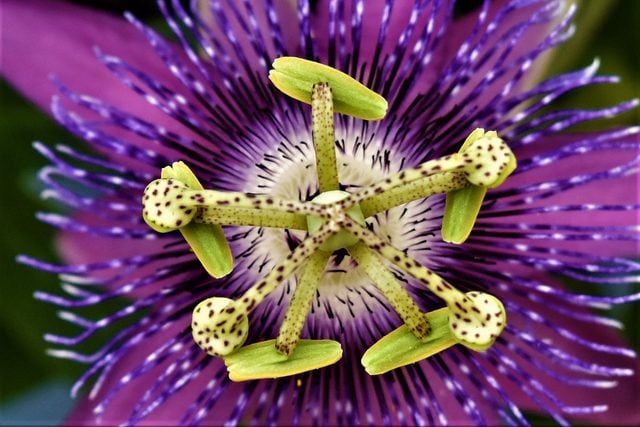
Passionflower
Passiflora, Zones 5 to 9
Passionflower is a perfect butterfly-friendly vining host plant. It climbs 15 to 50 feet and will thrive in full sun or part shade. If you’re starting this beauty from seed or small nursery plants, be prepared to provide support for its tendrils to cling and wind. After that, you won’t need to put in much effort to enjoy the blooms of this climber.
Butterfly benefits: Several fritillary caterpillars munch on passionflower. A couple of common ones are the gulf fritillary and the variegated fritillary.
Moth vs butterfly: Here’s how to tell the difference.
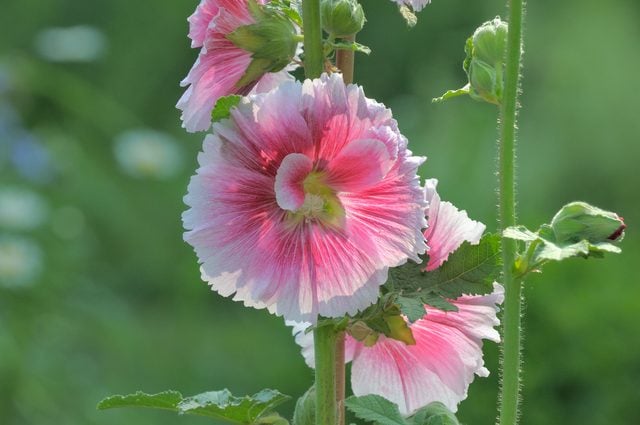
Hollyhock
Alcea rosea, Zones 2 to 10
If you want to make an impact in your garden, this tall butterfly host plant is an easy choice. It comes in many colors, attracts an array of insects and can reach up to 8 feet in height. Plant hollyhocks in full sun and along a fence or wall for stability.
Butterfly benefits: Painted lady caterpillars rely on several different plants as food sources, including hollyhocks and various spring annuals.
Discover the truth behind myths and facts about butterfly host plants.
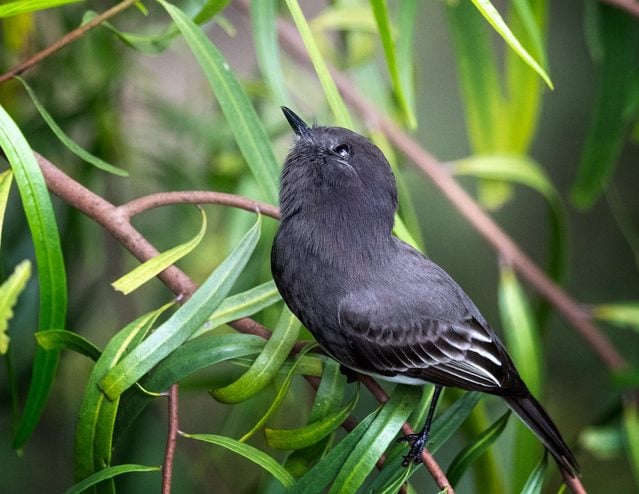
Willow
Salix, Zones 2 to 9
It’s true! Caterpillars feed on trees as well as pretty garden plants. Willows are known to grow up to 100 feet depending on species. So most gardeners will want smaller willows, like Dappled or Flame willow, which are a better size for backyard landscapes. Willow trees prefer full sun and tolerate many
soil types.
Butterfly benefits: Several caterpillars like to munch on willow trees, including viceroy, western tiger swallowtail and mourning cloak.
Psst—check out the common swallowtail butterflies you should know.
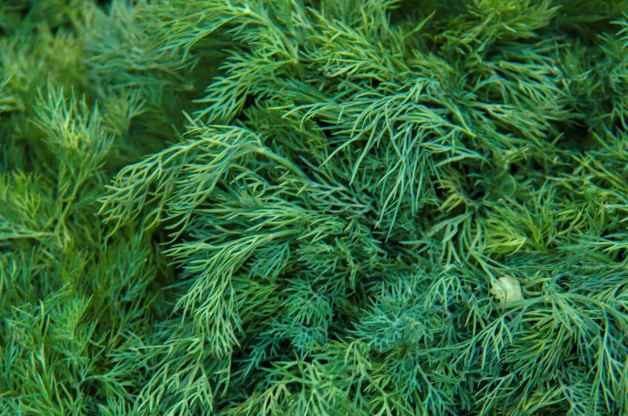
Dill
Anethum graveolens, annual
Generally grown for its culinary uses, dill is also an unconventionally attractive butterfly host plant with its feathery, aromatic green leaves and yellow buds. For an herb plant, dill gets quite large, reaching up to 4 feet tall.
Butterfly benefits: If you’re looking to snip some dill for use in your own kitchen, you’ve got to get your hands on it before the black swallowtails chow it down. Anise swallowtails and other caterpillars like dill (and parsley!) as well.
We found 6 go-to flowers you should plant in your butterfly garden.
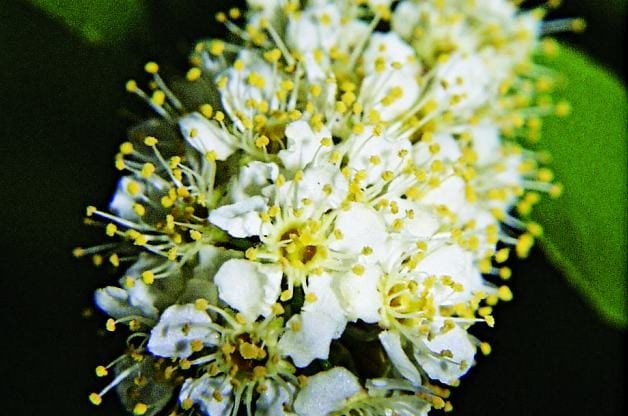
Chokecherry
Prunus virginiana, Zones 2 to 6
In spring, long bloom clusters appear in a stunning display on the branches of chokecherry trees. Later in the season, the tree produces berries perfect for birds to munch on. This tree grows about 30 feet tall, so be sure to leave plenty of space for this beauty to mature.
Butterfly benefits: A western species, the two-tailed swallowtail caterpillar enjoys feeding on the foliage of the chokecherry tree.
Plant a caterpillar cafe in your backyard.
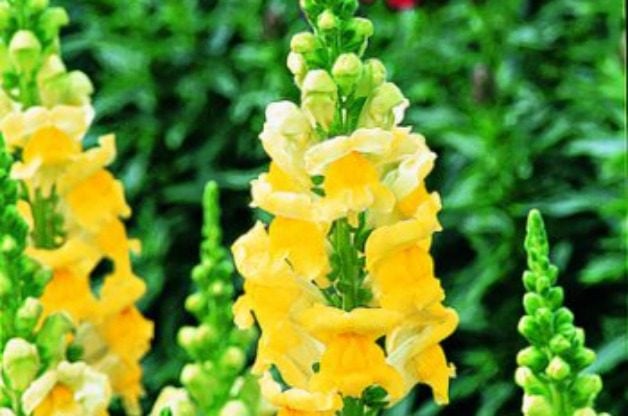
Snapdragon
Antirrhinum majus, annual
Mostly grown as an annual or a short-lived perennial in Zones 5 to 9, snapdragons are great butterfly host plants for adding height to a landscape. These garden classics’ stalks can reach about 4 feet tall with blooms in a variety of colors: white, pink, purple, orange or red.
Butterfly benefits: Look for common buckeye caterpillars snacking away on your snapdragons. They’re fun butterflies to have in your yard because they’re easily identifiable by bold, colorful eyespots.
Check out 3 butterflies that look like monarchs.
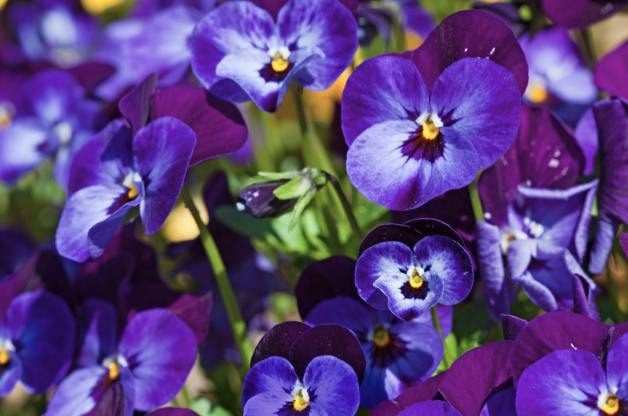
Violet
Viola, Zones 3 to 10
Try this pretty option if you’ve got a shady spot. Perennial violets bloom in spring and prefer partial shade. Annual violas actually prefer full sun but will thrive in cooler temperatures of partial shade. They’re dainty plants with a maximum height of only about 6 inches.
Butterfly benefits: Violets are the butterfly host plants for the widespread great spangled fritillary, as well as western fritillaries like Mormon, callippe and zerene.
Follow these tips for watching and photographing butterflies.
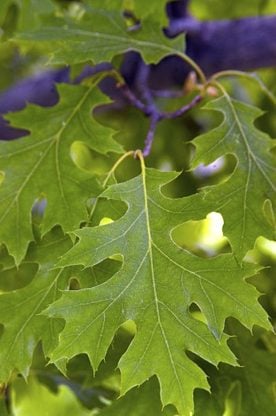
Oak
Quercus, Zones 3 to 10
You may know oak trees by the fantastic orange, red and yellow foliage show they put on every autumn. Mature oaks can reach up to 100 feet high, but you can find smaller varieties, such as pin oak, that grow to about 75 feet-still quite large. So keep in mind that even smaller varieties need plenty of space to grow and flourish.
Butterfly benefits: Young oak leaves are favorite butterfly host plants of the caterpillars of Horace’s duskywing and banded hairstreak.
Discover how butterflies and bugs hibernate.
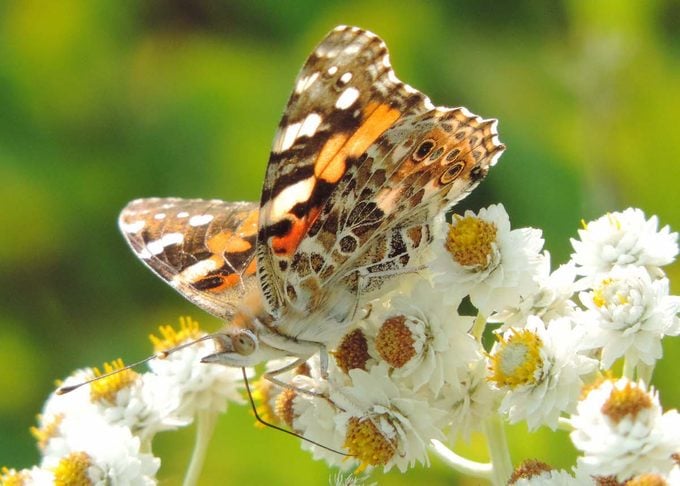
Everlasting
Anaphalis margaritacea, Zones 3 to 8
Maybe you’re more familiar with this plant by the common name pearly everlasting, but its beauty is the same no matter what you call it. Blooming from midsummer to early fall, this plant boasts small, flat-topped clumps of white flowers reaching about 2 feet tall.
Butterfly benefits: American lady butterflies can be found throughout most of the United States, so plant everlasting as a butterfly host plant to feed those hungry caterpillars.
Don’t forget to include these late-blooming fall flowers that attract butterflies. Plus, check out these 11 succulents that will bring pollinators to your yard.
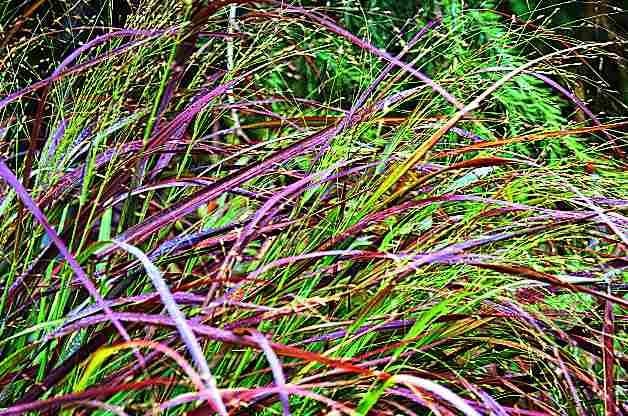
Switchgrass
Panicum virgatum, Zones 4 to 9
This easygoing and versatile grass is a good choice for wet conditions, drought or partial shade, as long as it’s planted in moist, well-draining soil. Growing narrow and upright with a cloud of seed heads in fall, switchgrass can reach more than 5 feet tall. Birds enjoy the seeds while the green leaves turn to yellow in fall.
Butterfly benefits: These butterfly host plants serve as food and shelter. Many skipper caterpillars need grasses like switchgrass as a food source. These same caterpillars might overwinter on or underneath the blades of grass.
See what a sphinx moth caterpillar and pupa looks like.
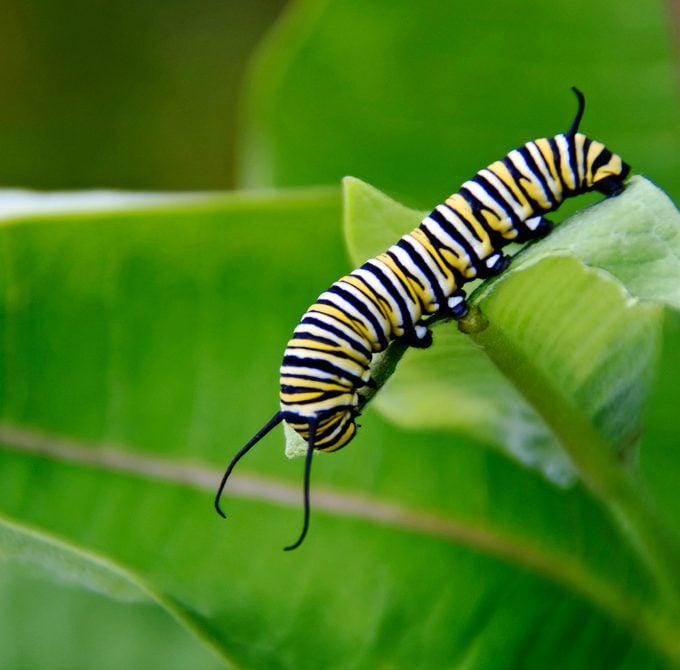
Bonus Butterfly Host Plant: Milkweed
Milkweed is the only butterfly host plant for monarchs. Populations of these winged jewels and their striped caterpillars are plummeting, largely because of the eradication of milkweed. So planting milkweed in your garden can make a big difference for monarchs.
To learn more, check out fascinating monarch butterfly facts.
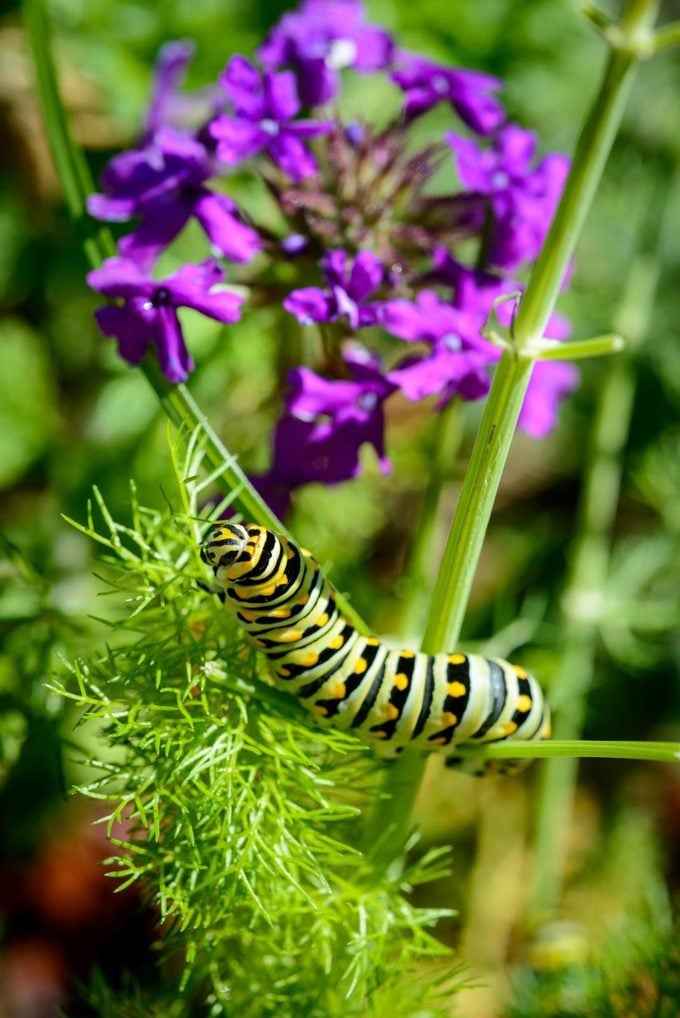
What Butterfly Host Plants Do You Grow?
Readers share how they support local caterpillar and butterfly populations in their own gardens.
“Butterfly weed is so easy to grow. It’s a monarch host plant but so many butterflies also love it!” says Irma Boucher of Prince Frederick, Maryland.
“My favorites for caterpillars include spicebush and tulip poplar trees,” says Lyn Cosby of Atlanta, Georgia. Check out 5 essential steps for tree planting success.
“For years I have grown fennel and parsley in my butterfly garden,” says Sarah Doan of Roca, Nebraska.
“Flat-leaf parsley is my No. 1 butterfly host plant. I see swallowtails lay their eggs throughout the summer, and my kids are thrilled when they spot caterpillars,” says Leslie Henriques of Grosse Pointe, Michigan.
“We grow two pots of dill, one for us and one for the eastern black swallowtail caterpillars. If they get on our stash, we simply place them on their own plant,” says Joseph Ackerman of Springfield, Ohio.
“I delight in watching monarchs deposit their eggs on my common milkweed leaves and I often stare in overwhelming wonder as the beautiful—and ravenous—monarch caterpillars munch,” says Jo Harris of Jonesborough, Tennessee.
